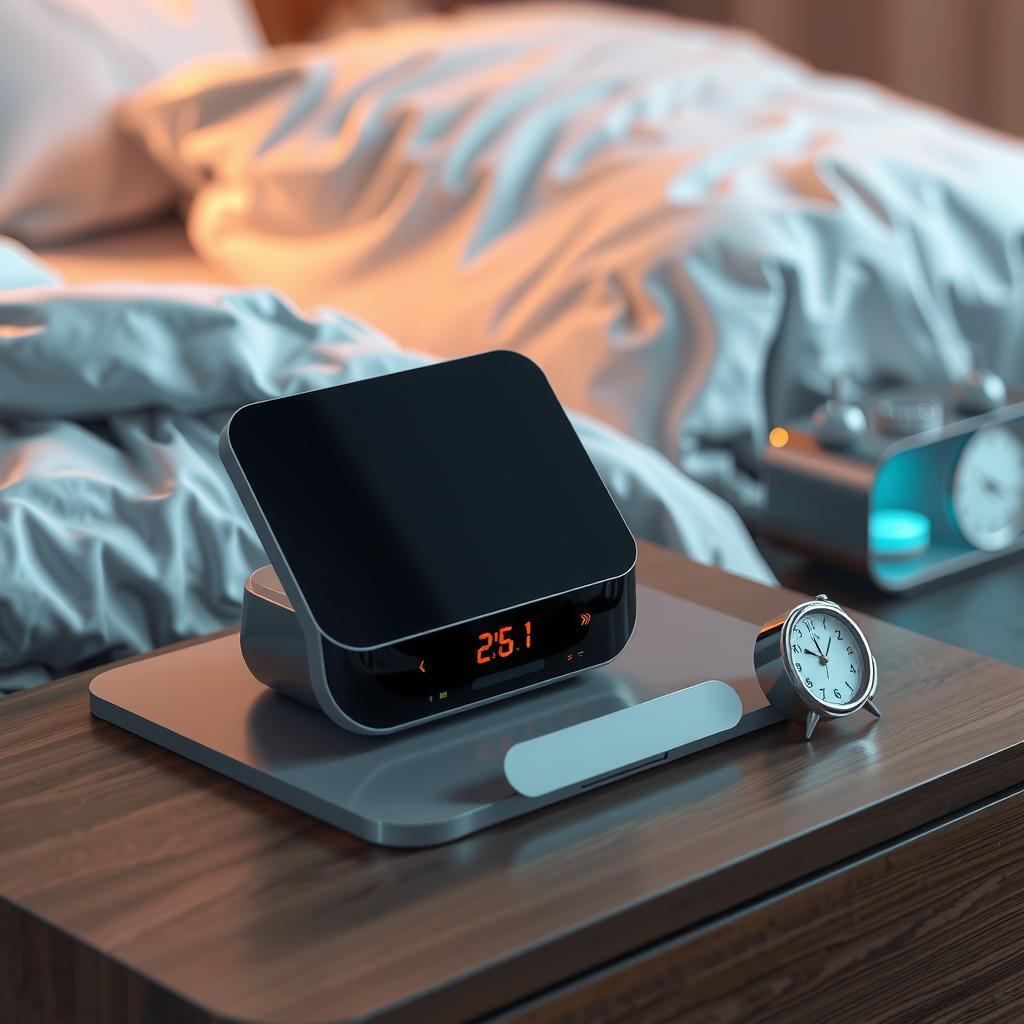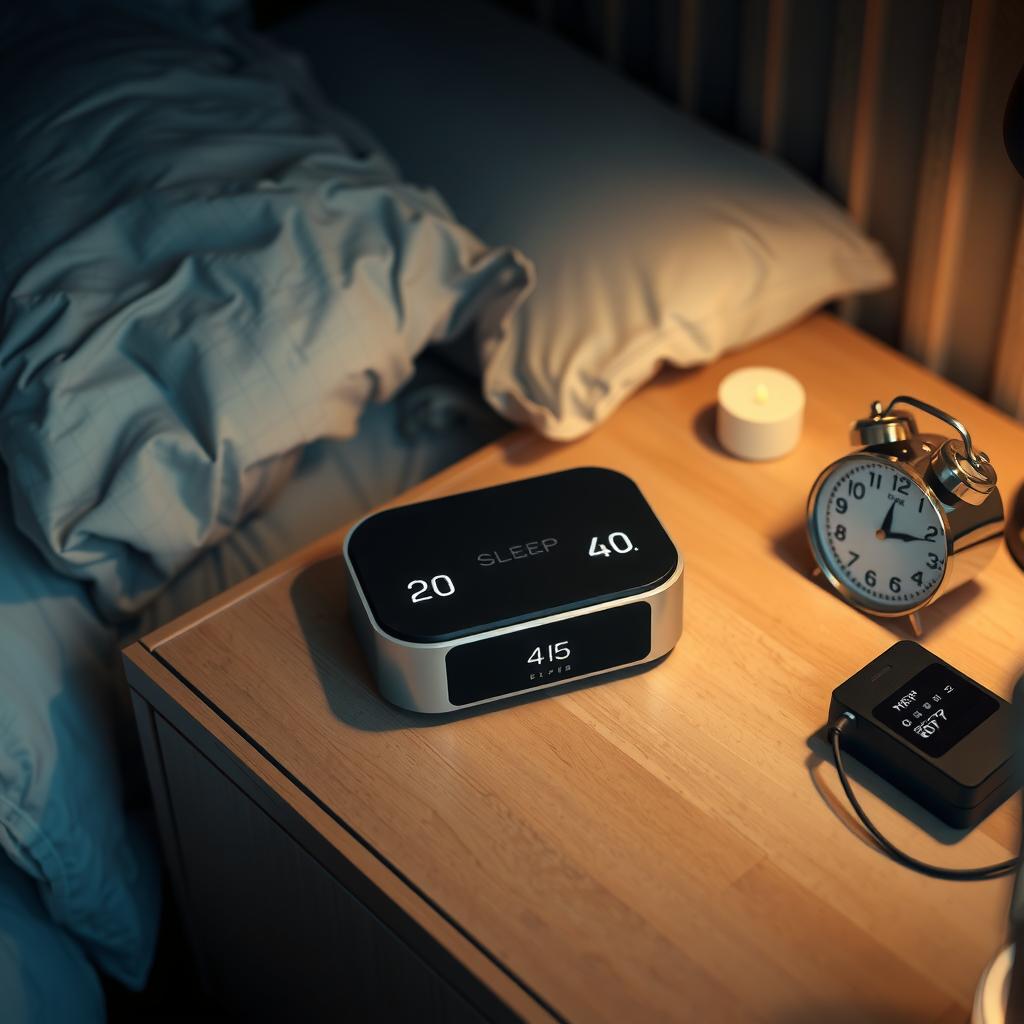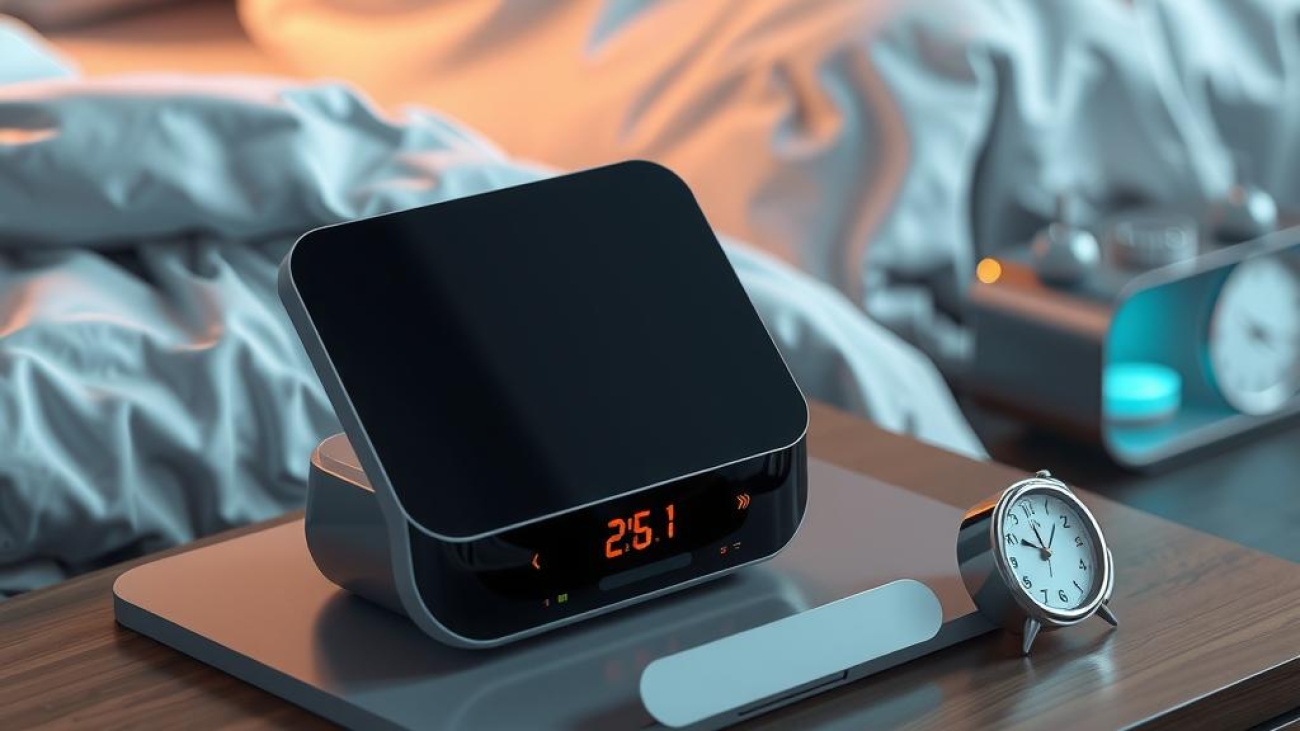In today’s fast-paced world, many individuals find themselves struggling to achieve a good night’s sleep. The phenomenon of restless nights has become all too common, leading to increased interest in various solutions for monitoring sleep and enhancing overall sleep quality. With numerous options available on the market for tracking sleep patterns, it can be overwhelming for consumers to determine which device will best address their unique needs. This blog post delves into the essential factors that should be considered when selecting a suitable sleep monitoring device, ensuring readers are equipped with knowledge to make informed decisions.
Understanding how different devices function is crucial; some focus primarily on basic metrics like duration of sleep while others provide comprehensive sleep analysis, including insights into cycles and disruptions throughout the night. The core value of this article lies in its ability to guide users through these choices by highlighting key features that directly impact their quest for restful nights. Readers will discover how specific functionalities can help them effectively monitor sleep and identify patterns that contribute to better health outcomes.
As people increasingly prioritize wellness, investing in a reliable health device has never been more relevant. By exploring the criteria necessary for evaluating equipment designed to track sleep accurately, readers can uncover solutions tailored specifically to improving their nightly rest—be it through advanced technology or user-friendly interfaces. This journey toward enhancing one’s sleeping experience begins with understanding individual preferences concerning comfort, data interpretation, and overall usability.
Thus, embarking on this exploration not only provides valuable insights but also instills confidence as one navigates the sea of available products aimed at optimizing sleep tracking. As we delve deeper into this topic, potential buyers will learn about practical aspects such as connectivity features and integration capabilities with other health-monitoring tools—all vital elements influencing effective decision-making when aiming for improved slumber quality.

Key Points:
-
Understanding Sleep Patterns: A comprehensive grasp of sleep patterns is vital for anyone aiming to enhance their sleep quality. By closely observing how different variables affect nightly rest, individuals can make informed decisions about which features in a health device will best suit their needs.
-
Features that Matter: When considering various sleep monitoring options, it’s essential to evaluate the specific functionalities offered. Devices equipped with advanced capabilities such as heart rate monitoring and movement tracking provide deeper insights through robust sleep analysis, aiding users in making effective adjustments to improve sleep quality.
-
Actionable Insights for Improvement: The true value of a sophisticated sleep tracking system lies not just in data collection but also in its ability to offer actionable recommendations. Users can leverage this information to refine habits and routines, ultimately paving the way toward achieving more restful nights and better overall wellness.

The Significance of Quality Sleep
Why Restful Nights Matter for Overall Well-Being
Quality sleep is a crucial component of overall health and well-being, significantly influencing various aspects of daily life. When individuals prioritize restful nights, they often experience enhanced cognitive function, emotional stability, and physical health. Studies have shown that sleep quality directly correlates with productivity levels; individuals who enjoy uninterrupted sleep tend to be more focused and efficient during their waking hours. Furthermore, the impact of poor sleep extends beyond mere fatigue—it can lead to chronic conditions such as obesity, diabetes, heart disease, and even mental health disorders like anxiety and depression. To address these issues effectively, many people are turning to health devices designed for sleep monitoring and analysis. These tools provide valuable insights into individual sleep patterns, enabling users to identify disturbances in their rest cycle.
The importance of understanding one’s own sleeping habits cannot be overstated. Inadequate or low-quality sleep can result from various factors including stress levels, lifestyle choices such as diet and exercise habits, or environmental elements like noise pollution or improper lighting in the bedroom. By utilizing modern technology for sleep tracking, individuals gain access to detailed data about their nightly rest—this includes information on average duration of sleep stages such as REM (Rapid Eye Movement) and deep sleep phases which are essential for restorative processes in the body. With this knowledge at hand, users can make informed adjustments aimed at improving their overall sleep quality.
The Role of Sleep Analysis
How Monitoring Affects Performance
Understanding how one sleeps is vital not just for personal insight but also for enhancing performance across different areas of life—from academics to professional endeavors. Research indicates that a consistent lack of quality sleep diminishes cognitive capabilities: memory retention suffers while decision-making skills decline under fatigue’s influence. By employing tools that allow individuals to monitor their sleeping behaviors closely through accurate metrics derived from sophisticated algorithms in modern health devices, it becomes possible not only to identify problems but also devise tailored strategies aimed at fostering better rest practices.
For instance, if an individual’s data reveals frequent awakenings throughout the night—a common disruption—the next steps might involve creating a more conducive environment by minimizing distractions before bedtime or establishing calming rituals that signal it’s time to wind down after a busy day. Additionally, those keen on optimizing both physical health alongside restful nights may opt into developing routines involving light stretching exercises prior bed-time or maintaining regularity around going asleep each night—all proven methods reported by users aiming toward improved outcomes from diligent attention paid towards managing one’s own sleep analysis.
By making deliberate efforts grounded in evidence-based approaches towards improving one’s ability to achieve restorative slumber marked by prolonged periods without interruption—individuals foster long-term benefits translating into enriched wellness experiences characterized by increased productivity levels coupled with enhanced mood states during daytime activities!
Understanding Sleep Monitoring Devices
Essential Features to Enhance Your Sleep Experience
When selecting a sleep monitoring device, understanding its key features can significantly influence overall satisfaction and effectiveness. A comprehensive analysis of essential elements—such as heart rate monitoring and movement tracking—can help individuals make informed decisions about which health devices will best suit their needs. The integration of heart rate monitoring is crucial, as it provides insight into the body’s physiological responses during various sleep stages. By observing fluctuations in heart rate throughout the night, users can gain valuable information regarding their sleep quality and possible disturbances that may affect restorative rest. Additionally, devices equipped with advanced movement tracking capabilities enable users to analyze their sleep patterns more effectively; this feature captures data on tossing and turning, thereby helping to identify potential factors contributing to poor sleep.
Importance of Accurate Sleep Analysis
How Technology Enhances Sleep Quality
Accurate sleep analysis is fundamental for anyone seeking to improve their nightly rest. Modern sleep trackers utilize sophisticated algorithms that process collected data from both heart rates and movements, offering an insightful breakdown of different phases of slumber—including light sleep, deep sleep, and REM cycles. This detailed information empowers individuals by highlighting specific areas where changes could lead to better outcomes—a significant advantage for those struggling with disrupted or insufficient rest. Furthermore, many devices now come equipped with user-friendly applications that present this data in a visually appealing manner; insights gleaned from these analyses can guide lifestyle modifications aimed at enhancing overall well-being.
Evaluating Design and Comfort
Choosing a Device That Fits Your Lifestyle
The design of a sleep monitoring device plays an integral role in ensuring comfort throughout the night—a critical factor given that even the most advanced technology cannot compensate for discomfort during sleeping hours. Many wearable options are designed with ergonomics in mind; they prioritize lightweight materials that do not interfere with natural movements or cause irritation while resting. Others come in non-intrusive forms such as under-mattress sensors or bedside monitors that track without direct contact but still provide comprehensive data on sleep patterns. When evaluating options available on the market today, consumers should consider which format aligns best with individual preferences while maintaining functionality—after all, comfort contributes significantly towards achieving restful nights.
Exploring Additional Features for Enhanced Functionality
Beyond Basic Tracking Capabilities
In addition to core functionalities like heart rate measurement and movement detection, some modern trackers offer supplementary features designed to enhance user experience further. These may include ambient sound detection—which helps assess external stimuli affecting one’s ability to fall asleep—as well as temperature regulation metrics aimed at identifying optimal sleeping conditions tailored specifically for each user’s needs based on environmental inputs observed overnight! Moreover integrating smart alarm systems allows users not only monitor when they enter light stages within their cycle but also wake them gently before deeper stages are reached thus promoting healthier waking processes post-sleeping sessions! As technology evolves rapidly within this sector investing time researching available products ensures choices made align fully personal goals improving quality life through effective management sleeping habits!
Long-term Benefits of Consistent Usage
Making Data-Driven Decisions About Health
Incorporating consistent usage patterns into everyday routines represents long-term benefits associated directly linked back towards improved overall health outcomes derived via diligent use dedicated tools provided by enhanced technological advancements inherent within today’s market offerings! Regularly analyzing trends captured over weeks months leads users toward actionable insights enabling sustainable improvements related activity levels stress management techniques dietary habits—all crucial contributors enhancing general physical mental wellness states experienced regularly day-to-day lives ultimately resulting increased longevity satisfaction achieved across multiple dimensions living experiences encountered ongoing basis moving forward confidently embracing future possibilities open exploration paths unlocked utilizing knowledge gained through utilization innovative solutions offered contemporary innovations existing today marketplace landscape expanding continuously growing advancing science supporting healthy lifestyles everywhere globally!
Actionable Insights from Sleep Data
Unlocking the Secrets of Restful Nights
Understanding the intricacies of sleep can be a pivotal step towards achieving better health and well-being. With advancements in sleep monitoring technology, individuals now have access to rich sleep data that can illuminate their unique sleep patterns. By analyzing this data effectively, one can identify factors that contribute to both restful nights and disruptive rest. For instance, tracking variables such as time spent in different sleep stages—light, deep, and REM—enables users to pinpoint what influences their overall sleep quality. A common finding among many is that lifestyle choices directly impact these stages; thus, integrating insights from sleep analysis into daily routines could foster improved habits.
Transforming Habits for Better Sleep
The Power of Consistency
A consistent bedtime routine plays an essential role in enhancing overall sleep quality. With the help of modern health devices capable of monitoring sleep, individuals are encouraged to establish regular sleeping hours based on their personalized data insights. For example, if someone notices a correlation between late-night screen time and poor-quality rest through their sleep tracking, they might choose to implement a technology curfew or adopt calming pre-sleep activities like reading or meditation instead. Such small changes may significantly influence one’s ability to fall asleep quickly while prolonging restorative periods throughout the night.
Deepening Understanding Through Data
Interpreting Your Sleep Patterns
Interpreting the metrics gathered through various devices allows for informed decisions regarding personal habits related to sleep hygiene practices. Health experts often emphasize how understanding one’s individual trends is critical when aiming for improvements in restful nights. For example, keeping track of caffeine intake alongside nightly patterns may reveal unexpected disruptions linked with afternoon lattes or evening teas; thus encouraging adjustments before bed becomes essential for those seeking quality shut-eye. Furthermore, journals noting feelings upon waking against tracked metrics provide deeper insight into how external stressors or dietary choices affect nightly recovery.
Creating Personalized Action Plans
Leveraging Technology for Optimal Rest
The culmination of analyzed data leads naturally toward crafting tailored action plans aimed at promoting healthier sleeping behaviors within any individual’s lifestyle framework. Incorporating findings from detailed analyses empowers one not only to understand but also actively manage conditions affecting improved sleep. Individuals who commit themselves to regularly reviewing their monitored results will likely experience greater satisfaction with both quantity and quality over time by embracing proactive measures derived from analytics rather than passive acceptance alone—a shift which could prove transformative toward lasting wellness gains rooted deeply within mindful management strategies surrounding slumber itself.
Frequently Asked Questions:
Q: What should I look for in a sleep monitoring device?
A: When selecting a sleep monitoring device, individuals should consider features such as heart rate monitoring, movement tracking, and environmental factors like room temperature and noise levels. These aspects contribute significantly to understanding one’s sleep patterns and ultimately enhancing overall sleep quality.
Q: Can these devices really help improve my sleep?
A: Yes, many health devices are designed not only to track your sleep but also to provide actionable insights that can lead to improved restful nights. By analyzing the data collected over time, users can identify trends and behaviors that either positively or negatively impact their ability to achieve restorative slumber.
Q: Are simpler devices just as effective as advanced ones?
A: While simple wearables may offer basic data on your sleep cycle, more sophisticated options provide comprehensive sleep analysis that can reveal deeper insights into your nightly rest. Depending on individual needs—whether one desires basic functionality or extensive oversight—there is a suitable option available in the market for everyone looking to monitor their sleep effectively.

Add a Comment